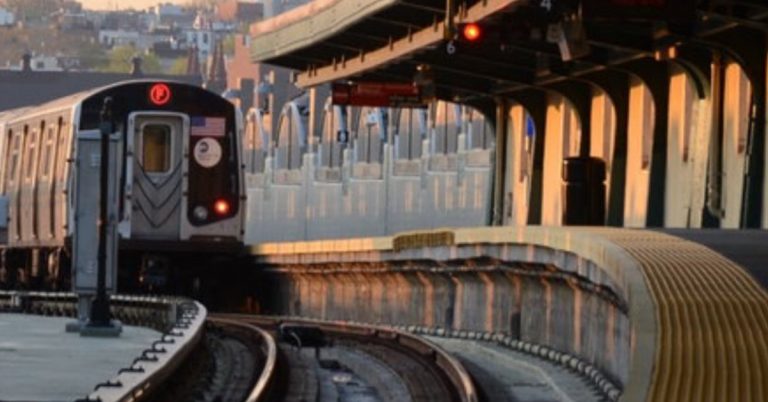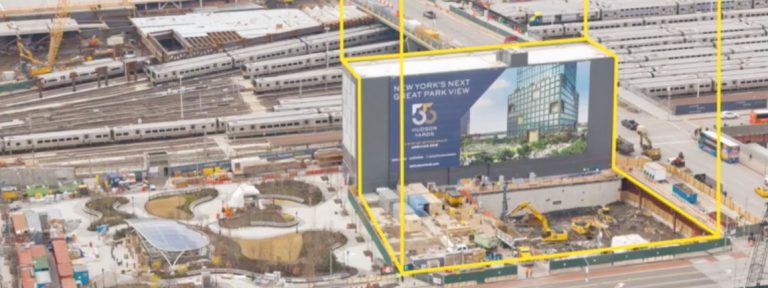PATH to Penn Station: Restoring an Underground Passage to Streamline NYC Transit
Reopening the dormant Gimbels Passageway underneath 33rd Street would streamline NYC transit by linking the New York City Subway, PATH, Amtrak, Long Island Rail Road, and New Jersey Transit at Penn Station. It would be a low-cost, high-profile enhancement to the renewal of Penn Station, and an opportunity for an innovative public/private partnership with the real estate community.
When New York Penn Station was built in the early 20th century, a passageway beneath 33rd Street between Sixth and Seventh Avenues seamlessly connected passengers to transit, hotels, stores, and businesses along the block-long span adjacent to the new station. The Gimbels Passageway, as it came to be known, gave passengers easy access to the Hotel Pennsylvania, Gimbels Department Store (a then-major rival to Macy’s), and the rapid transit hub at 34th Street-Herald Square, where passengers could reach multiple elevated and subway lines.
The passage survived the decline of rail traffic in the mid-twentieth century, and the controversial demolition of Penn Station’s headhouse in 1963, but it was closed in 1986 during the period in which New York City nearly declared municipal bankruptcy, and disinvestment in mass transit led to a rise in crime and squalor throughout the subway system.
In 2009, Vornado Realty Trust made restoring and reopening the passageway part of a package of upgrades to streamline NYC transit and win city approval for its 15 Penn Plaza project, which proposed to replace the Hotel Pennsylvania with a 1,200-foot tall office tower. Steve Cuozzo, commercial real estate columnist at the New York Post, described the changes in 2010 as a “wish-list” from transit agencies to streamline customer experience at the busiest rail station in the Western Hemisphere, and three of the busiest subway stations in the New York & New Jersey region.
According to the environmental impact study, Vornado would build new subway entrances at Seventh Avenue between West 32nd and 33rd streets; widen the congested northbound No. 1 line platform by six feet; and widen stairs and build new escalators and elevators to serve the subway and PATH lines. It would also improve access to the Sixth Avenue subway and PATH entrances, which are both now hidden inside the Manhattan Mall.
But the most dramatic change in the proposal might be a plan to open a sanitized, 21st Century edition of the old Gimbels Passageway — the creepy corridor that once connected the Herald Square and Penn Station/Seventh Avenue subway stations, until crime and squalor forced the MTA to close it in 1980.
The concourse would be widened to 16 feet from 9 feet and crafted like Rockefeller Center’s, with stores, artwork and mid- block access points.
Vornado commissioned visual artist Stewart Smith to create a potential public art installation for the reopened passageway. Smith proposed a simulation using 900 rotating digital discs to explore the theme of clockwork.
In an April 15, 2010 presentation to Manhattan Community Board 5, Bob Paley, director of transit-oriented development for the MTA, voiced the agency’s support for the project and the transit improvements it would bring to the area around Penn Station.
The MTA strongly supports this project – both the subway and transit improvements and the new tower that will rise above them. Although we can’t bring back the old Penn Station, through a series of very significant improvements such as those proposed as part of this development, we will be able to bring back the high level of convenience and amenity that the public deserves.”
Although 15 Penn Plaza faced opposition from preservation advocates over the proposed demolition of the Hotel Pennsylvania to make room for the tower, and the local community board voted 36-1 against it, the project was unanimously approved by the New York City Department of City Planning, and subsequently approved by the New York City Council in 2010. Citing market conditions, Vornado delayed the project in 2011. In 2013, the developer announced that it was exploring a makeover of the hotel instead of demolition.
In 2017, Vornado, Related Companies, Skanska, and Empire State Development Corporation finalized a $1.6B project to convert the James A. Farley Post Office into a new headhouse for Penn Station. Named after the late-U.S. Senator Daniel Patrick Moynihan, who championed a new train station to replace the demolished Penn Station headhouse, the Moynihan Train Hall will be the transit centerpiece of an emerging neighborhood that extends from the Hudson Yards and Manhattan West developments west of the station to the Penn Plaza towers directly above, and the fast-growing Herald Square to the east.
Moynihan Train Hall’s expected opening in 2020 will give passengers new entrances, retail, waiting areas, and train access, and will enable the renovation and streamlining of existing passenger spaces throughout the station. In September 2018, New York Governor Andrew Cuomo announced plans for a new pedestrian plaza and Long Island Rail Road entrance on 33rd Street between Seventh and Eighth Avenues. The project also includes renovation and expansion of the LIRR passenger concourse under 33rd Street.
Reopening Gimbels Passageway would complete this transformation and streamline NYC transit, by linking the B/D/F/M subway trains and PATH at Sixth Avenue, with the 1/2/3 and A/C/E subway trains, Amtrak, Long Island Rail Road, and New Jersey Transit at Penn/Moynihan Station between Seventh and Eighth Avenues. It would be a low-cost, high-profile enhancement to the renewal of Penn Station, and an opportunity for an innovative public/private partnership with the real estate community.



